The Faces of Bayon
Bayon sits at the exact center of the ancient city of Angor Thom, adorned with smiling faces looking out over the land in each cardinal direction. It’s widely agreed that Jayavarman VII, the King who built Bayon, served as the model for the faces. The same face features over the gates of Angor Thom, sending the clear visual message that the King was watching out over the domain.
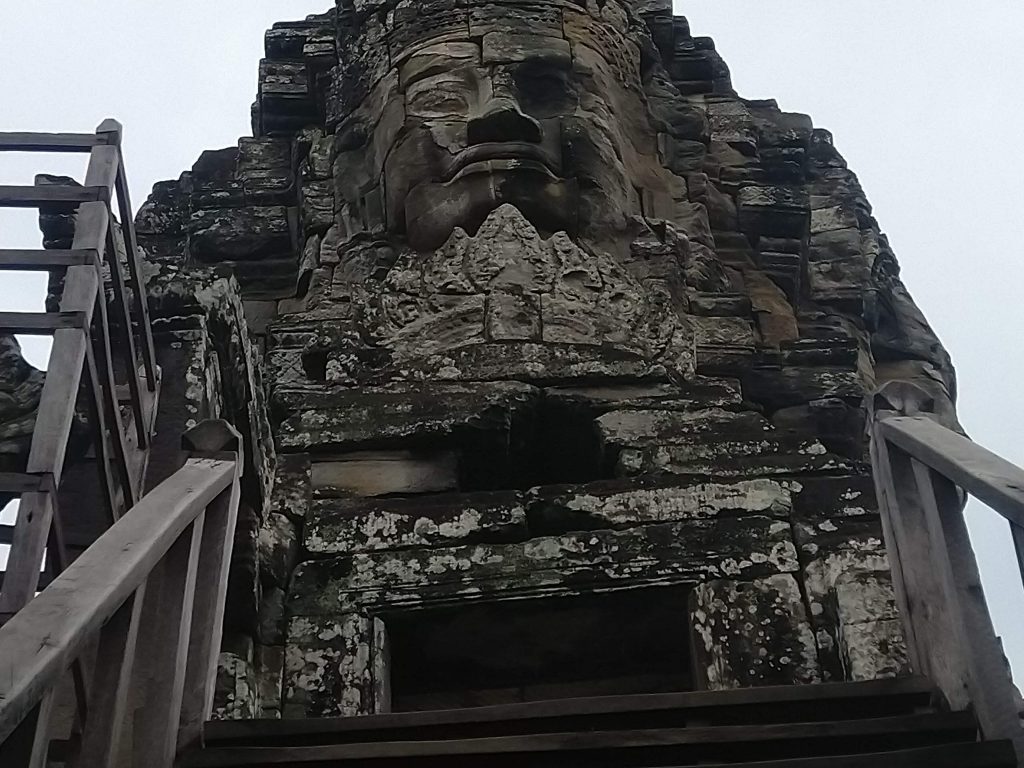
It’s not known how many faces were originally sculpted but 216 have survived. Traditionally, Khmer monarchs were believed to be god kings; divine avatars of Skanda, the Hindu god of war. Jayavarman VII was only the second Khmer King to adhere to Buddhism and it’s believed that he was considered to be a Dharma-King, a boddhisattva who had achieved enlightenment but remained on earth to instruct others.
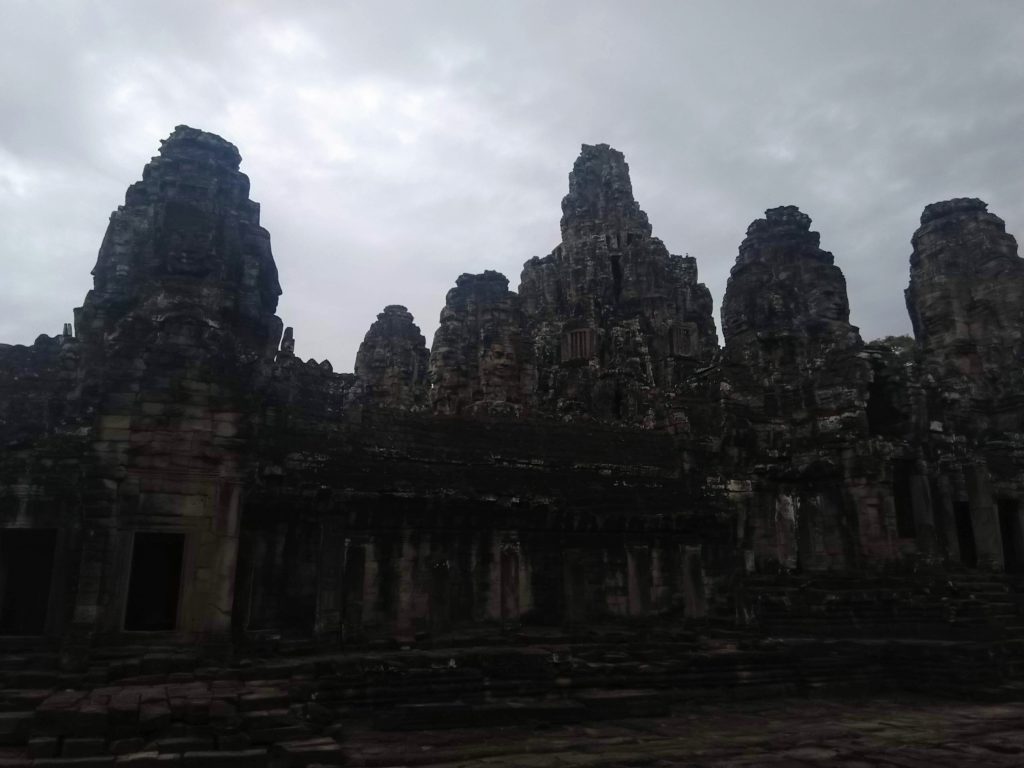
Bayon was originally intended to serve as a Mahāyāna Buddhist temple but was later converted to Hinduism and Theravada Buddhism based on the religion of the current ruler.
Bas Reliefs
The walls and columns of Bayon are decorated with ornate bas reliefs. This artwork is still impressive today, after centuries of being worn by the elements, but when Angkor was populated they would have been painted to add further to the effect.
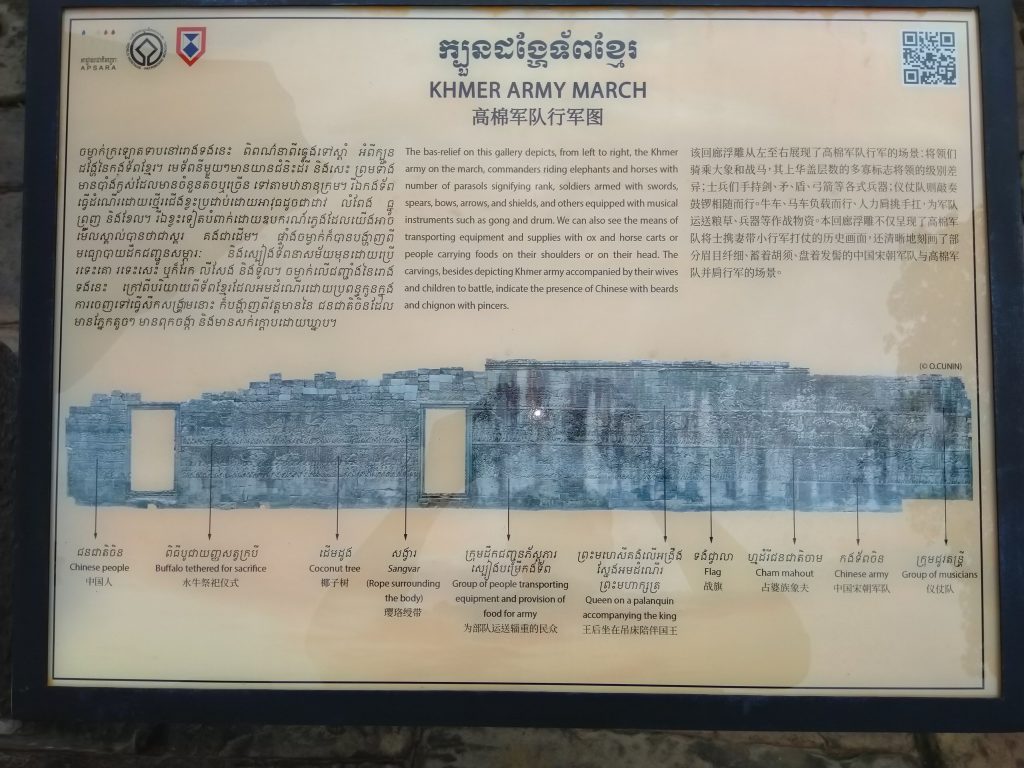
We don’t know how the bas reliefs were painted but a few traces of ancient lacquer have been discovered by archaeologists. Red was the most common color found by archaeologists but I don’t know if that’s because red was the most common color or because whatever dye the ancient Khmer used for red was more resilient.
Exploring Bayon
I wanted to include a couple of photos and videos of us exploring Bayon temple.
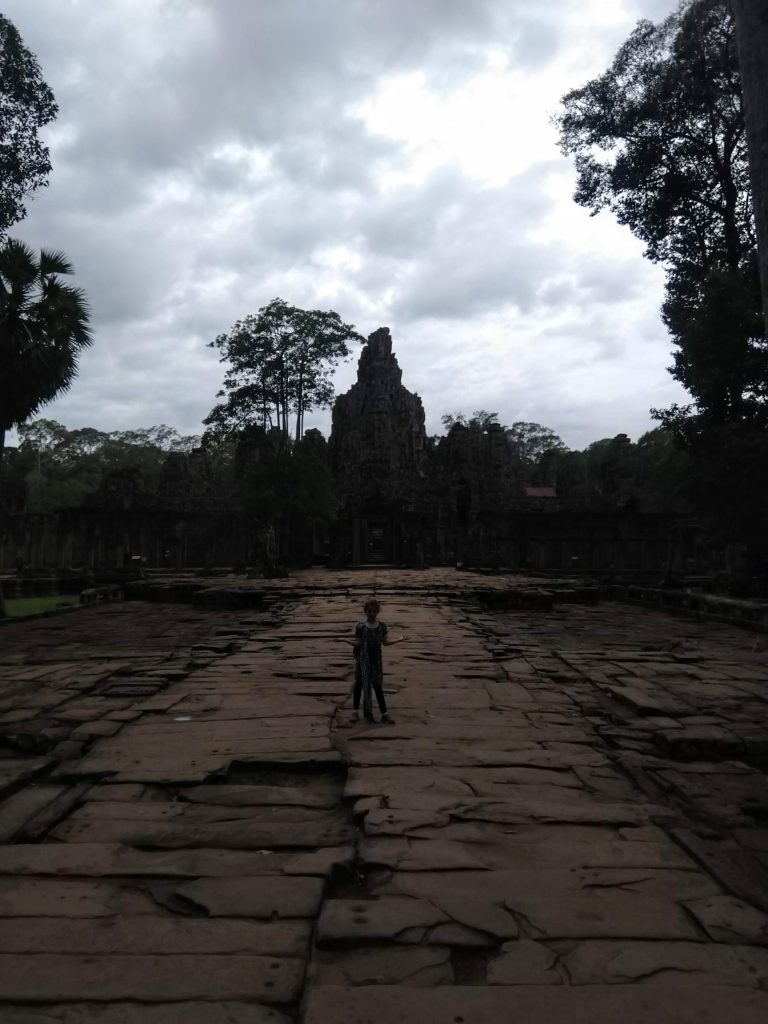
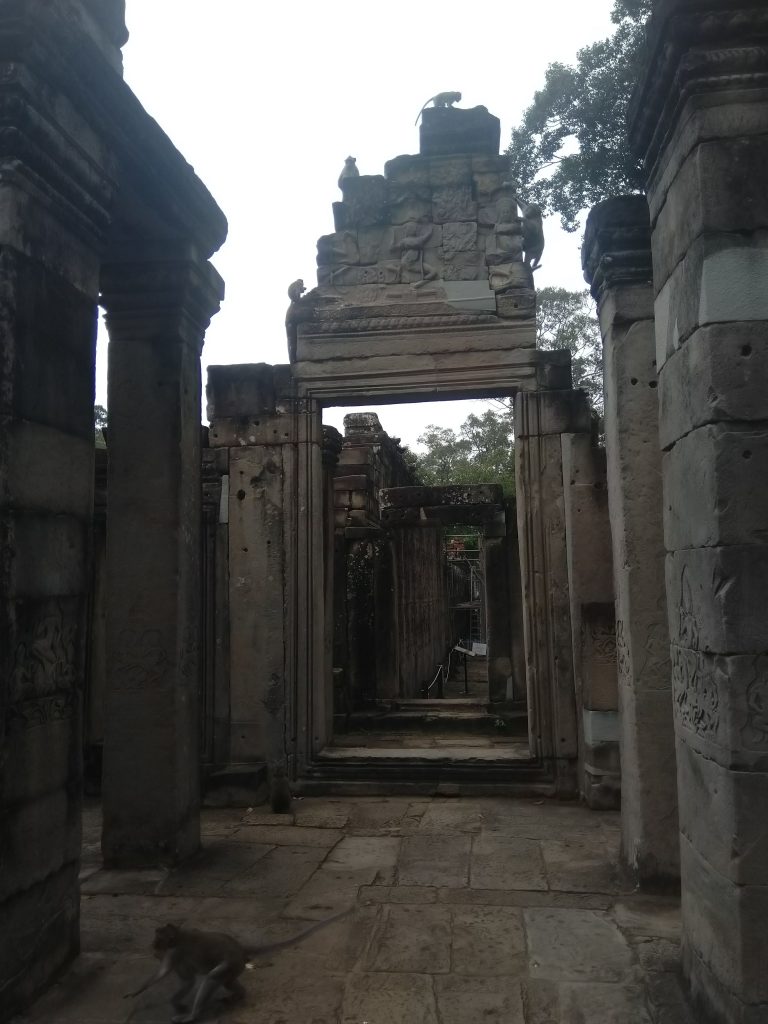
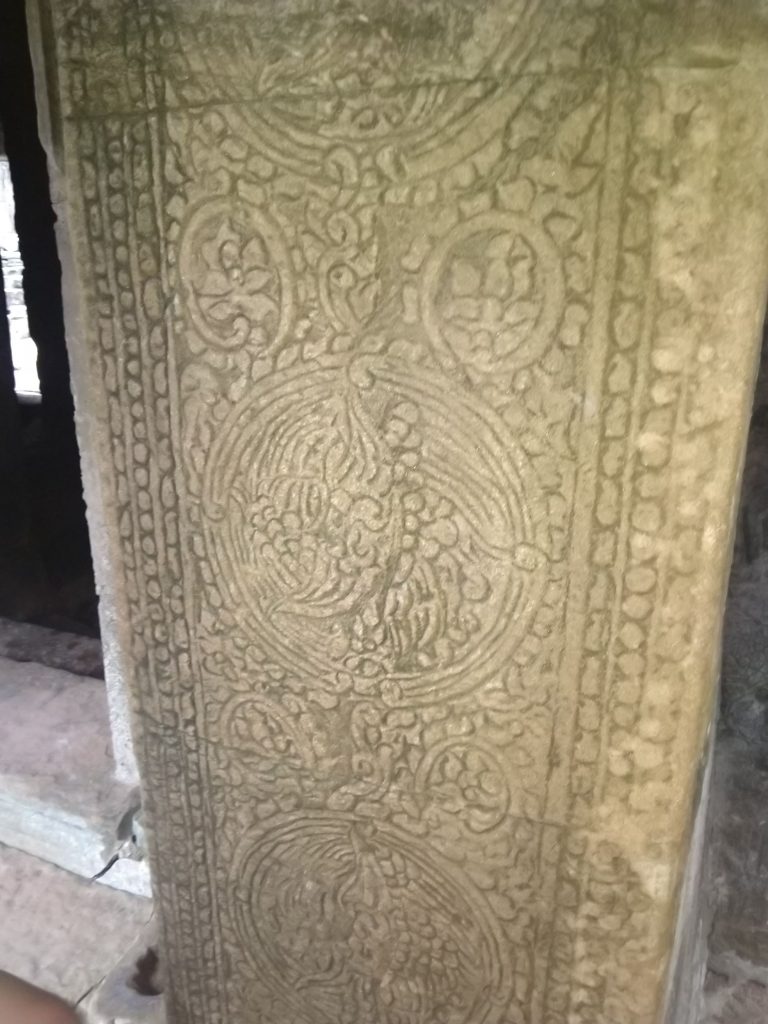

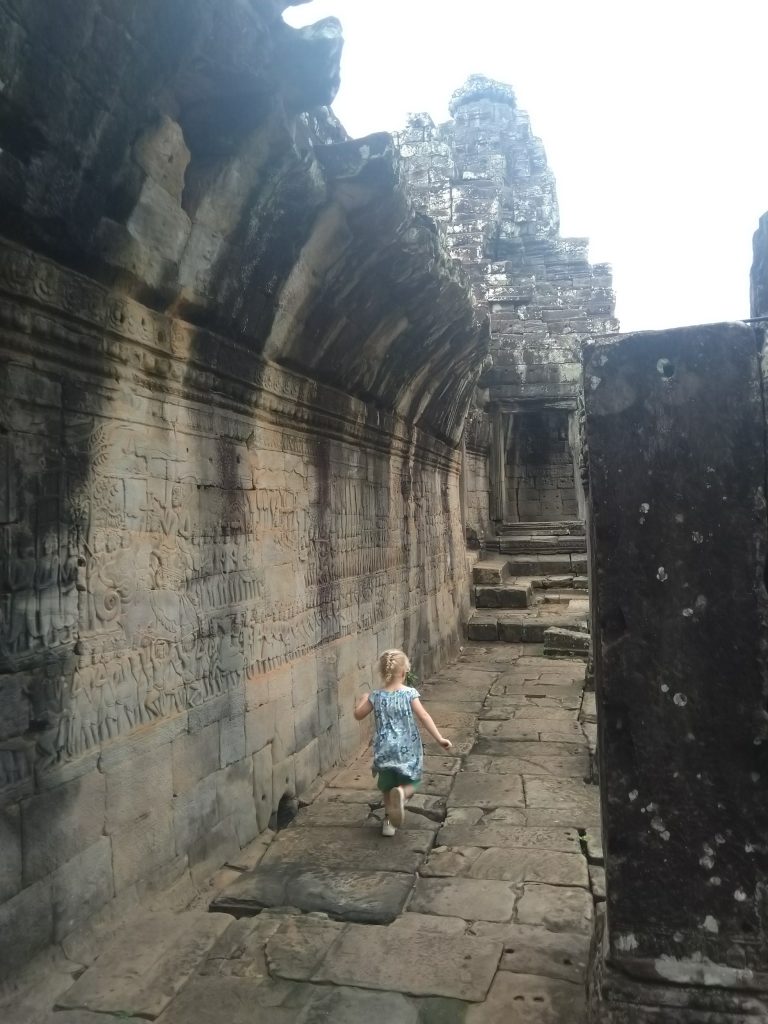
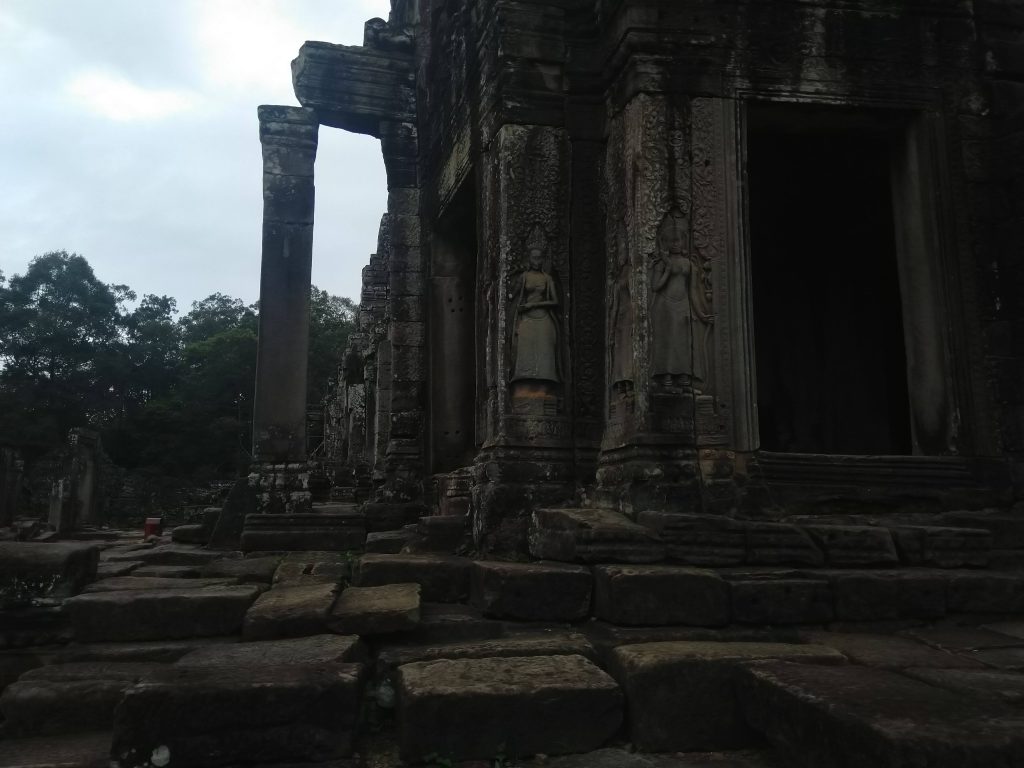
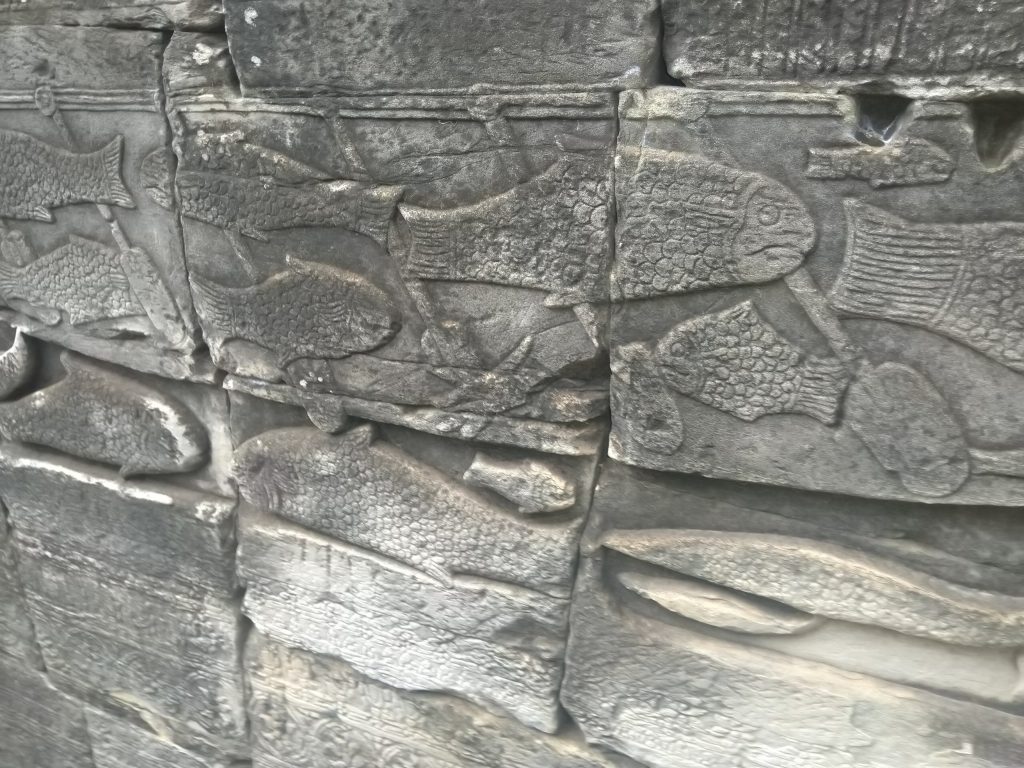
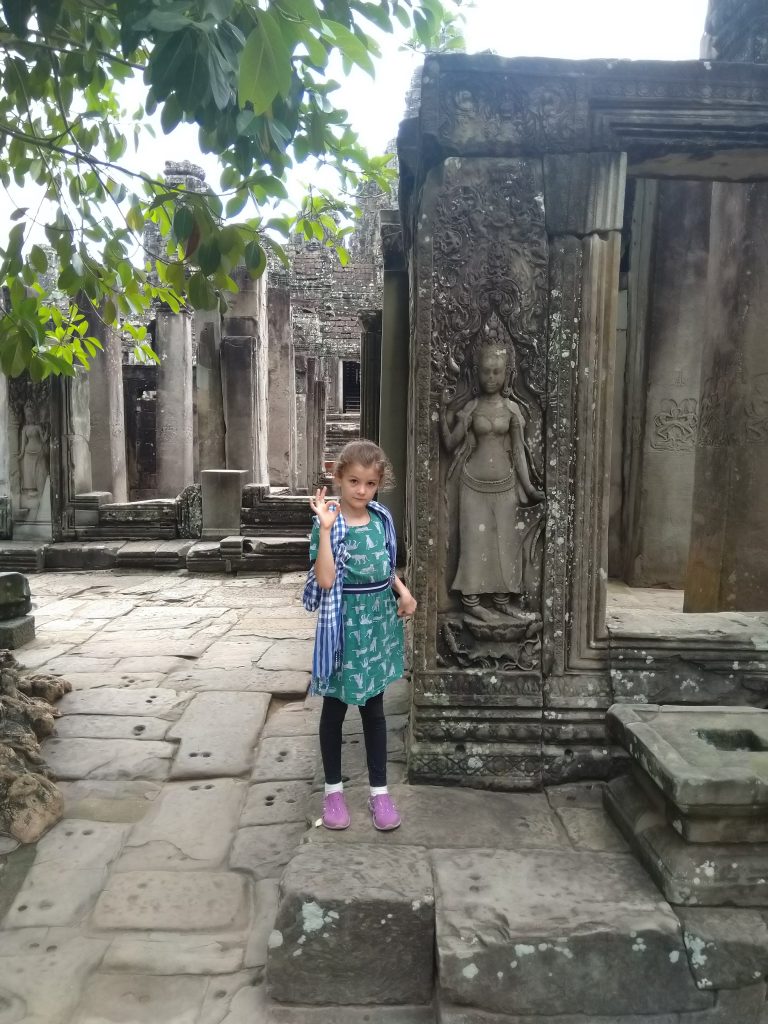
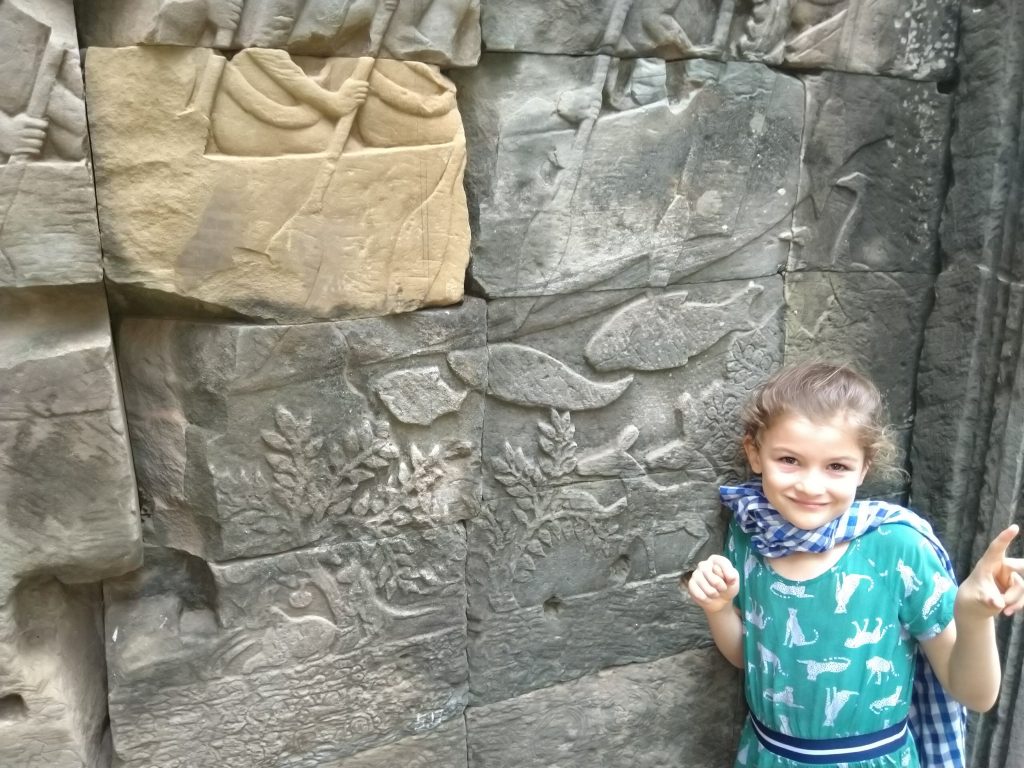

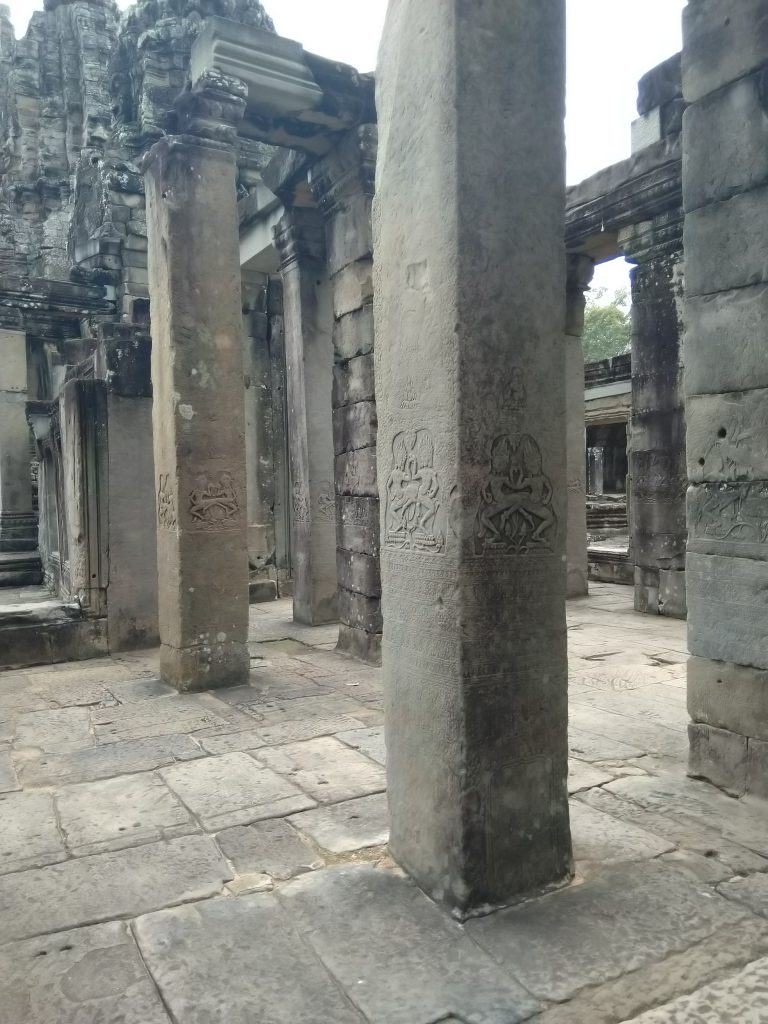
This place looks amazing!!